Imagine this: You are walking down the road, waiting for your friend, and you take out your cell phone. With a couple of taps, you order a coffee from your preferred café, check your health stats, and answer a video call from your associate. Mobile applications have flawlessly incorporated into our everyday lives, changing how we convey, work, shop, and entertain ourselves. The global mobile app market reached an estimated value of USD 206.85 billion in 2022. Its continual growth heralds a surge of trends influencing future mobile app development. These trends shape the landscape, fostering innovation and evolution in the industry, reflecting the dynamic nature of consumer demands and technological advancements driving mobile app development forward. 6 Trends to Watch in Mobile App Development in 2023 1. 5G 5G opens the entryways to inventive applications that were once unbelievable. it accelerates multiple times quicker than 4G, guaranteeing consistent streaming, lightning-quick downloads, and decreased idleness. Imagine downloading a top-quality film in merely seconds or playing a game with high graphics without a trace of lag. This jump improves user experience as well as industries. And helps healthcare to provide real-time remote consultations and manufacturing to implement precision robotics through ultra-responsive connections. To develop 5G applications, you need to use tools and frameworks that support the 5G network features and capabilities. Some of the popular tools for 5G app development are: Android Studio: Android Studio is the official integrated development environment (IDE) for Android app development. Flutter: Flutter is a cross-platform app development framework that allows you to build native-like apps for Android, iOS, web, and desktop from a single codebase. Unity: Unity is a game engine and platform that enables you to create immersive 3D and 2D games for various platforms, including mobile devices. 2. Artificial Intelligence (AI) AI-powered chatbots that provide instant customer support on e-commerce platforms. They mimic human interactions, provide quick solutions, and are available 24/7, significantly enhancing user satisfaction. For example, Shopify uses AI algorithms to predict customer behavior and offer personalized shopping experiences. To develop AI-powered chatbots. You need to use tools and frameworks that support natural language processing (NLP), machine learning (ML), and conversational AI. Some of the popular tools for AI chatbot development are: Dialogflow: Dialogflow is a cloud-based platform that allows you to build natural and rich conversational experiences for your apps, websites, and devices. Rasa: Rasa is an open-source framework that enables you to build contextual and scalable chatbots and voice assistants. Wit.ai: Wit.ai is a platform that allows you to easily create voice and text-based chatbots and assistants. 3. Wearable Gadgets Wearable devices are no longer limited to fitness trackers. All devices, starting from smartwatches to smart glasses, have become a part of our daily use. Mobile apps seamlessly synchronize data between smartphones and wearables. For example, Apple’s Health app combines data from both devices, creating a detailed health profile for users. To develop apps for wearable devices, you need to use tools and frameworks that support the specific features and functionalities of the devices. Some of the popular tools for wearable app development are: Android Studio: Android Studio is the official IDE for Android app development. Xcode: Xcode is the official IDE for iOS app development. Tizen Studio: Tizen Studio is an IDE for developing apps for Tizen devices, which include Samsung smartwatches. 4. The Internet of Things (IoT) Our houses are becoming smarter, and so are our applications. The IoT ecosystem is growing, so much so that applications communicate with each other. Imagine where your coffee machine, and alarm clock, communicate to give you the perfect morning routine. To develop IoT applications, you need to use tools and frameworks that support the communication and integration of various devices and sensors over the internet. Some of the popular tools for IoT app development are: Arduino: Arduino is an open-source platform that allows you to create electronic projects using hardware boards and software libraries. Raspberry Pi: Raspberry Pi is a low-cost computer that can be used to create IoT projects using various sensors and modules. Node-RED: Node-RED is a flow-based programming tool that allows you to connect devices and services using a graphical interface. 5. Cross-platform Development Cross-platform development frameworks enable developers to create applications that work across multiple platforms, reducing development time and maintenance efforts. This approach is especially advantageous for startups and businesses aiming to reach a broader audience without doubling their development efforts. To develop cross-platform applications, you need to use tools and frameworks that allow you to write one codebase that can run on different platforms. Some of the popular tools for cross-platform app development are: React Native: React Native is a framework that allows you to build native-like apps for Android and iOS using JavaScript and React. Flutter: Flutter is a framework that allows you to build native-like apps for Android, iOS, web, and desktop using Dart. Xamarin: Xamarin is a platform that allows you to build native apps for Android, iOS, and Windows using C# and .NET. 6. App Monetization Freemium models with in-app purchases, subscription plans, and targeted advertising are very common. For example, the e-commerce platform Shopify has a mobile application that not only allows businesses to manage their online stores but also offers features like inventory management and customer engagement. To monetize your app, you need to use tools and frameworks that support the various methods of generating revenue from your app. Some of the popular tools for app monetization are: Google AdMob: Google AdMob is a platform that allows you to display ads from Google and other networks in your app. Stripe: Stripe is a platform that allows you to accept payments from your app users. Firebase: Firebase is a platform that provides various services for your app development and monetization. Wrapping Up With a team of specialists well-versed in the latest trends, AppVin Technologies can guide your application from ideation to execution, ensuring it remains relevant and impactful in the years to come.

